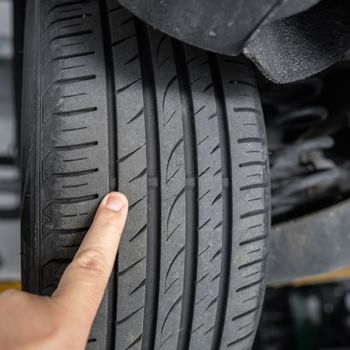 Tires naturally wear over time, and as the treads get thinner, your vehicle’s performance in wet or slippery conditions can be significantly affected. This not only makes it harder to stop or steer but also increases the risk of a blowout, which can be dangerous on the road.
Tires naturally wear over time, and as the treads get thinner, your vehicle’s performance in wet or slippery conditions can be significantly affected. This not only makes it harder to stop or steer but also increases the risk of a blowout, which can be dangerous on the road.
While more miles typically mean more wear, other factors play a big role too. Tires work closely with your car’s suspension, brakes, and transmission to keep you moving safely. The size and type of tires you have are designed to match your vehicle’s weight and handling needs, ensuring proper grip and control.
Most drivers check tire condition during regular maintenance, but issues like misalignment or aggressive driving can cause uneven wear, leading to early replacement. Here are some tips to help extend the life of your tires and keep them performing at their best.
Check Tire Pressure Frequently
It's important to check your tire pressure at least once a month. Underinflated or overinflated tires can affect how they grip the road, impact fuel efficiency, and even lead to premature wear. Maintaining the correct PSI is key to safe and efficient driving.
Uneven pressure can lead to:
- Center Wear: Happens when tires are overinflated, causing the middle of the tread to wear faster. This can reduce steering control and increase the chance of a blowout.
- Edge Wear: Occurs from under or over-inflation, making the tire’s edges wear out quicker. This affects the sidewalls and may lead to overheating or punctures.
Rotate Your Tires Regularly
If you don’t rotate your tires, front tires tend to wear faster due to the weight and force distribution. It’s recommended to rotate your tires every 3,000 to 6,000 miles or during oil changes. Rotating helps ensure even wear and extends tire life.
Skipping rotations can lead to poor handling, difficulty navigating potholes, and reduced responsiveness. Proper rotation helps maintain balanced air pressure and wear across all tires.
Avoid Aggressive Driving Habits
Your driving style directly impacts tire wear. Speeding through curves, sudden braking, or hitting potholes at high speeds can accelerate front tire wear. These habits often result in shallow treads along the outer edges of the tires, reducing traction and safety.
Don’t Wait Too Long to Replace Tires
Ignoring worn tires can be risky, especially in cold or wet weather. Most manufacturers suggest replacing tires every 30,000 miles or five years, whichever comes first. Delaying replacements can lead to issues like feathering—where the tread becomes slanted—and poor alignment.
Noisy tires or uneven tread patterns are signs that it might be time for a change. Keeping up with tire maintenance is essential for both safety and performance.
Ensure Proper Wheel Alignment
Wheel alignment should be part of your routine tire care. If your wheels aren't aligned correctly, you may notice uneven wear on the inside or outside of the tires, or even cupping—flat spots caused by worn suspension components. A professional alignment can fix these issues and improve handling.
At DaSilva’s Auto Body, we offer expert tire services, including rotations and alignments. Don’t wait—schedule an appointment at our Naugatuck location today to keep your tires in top condition and your drive safe and smooth.
Cordierite Ceramic,Cordierite Honeycomb Ceramic,Refractory Ceramic Tube,Cordierite Ceramic Plate For Gas
Yixing Xiangyang Jiujiu Chinaware Industry Co., Ltd. , https://www.xyjjceramic.com
![<?echo $_SERVER['SERVER_NAME'];?>](/template/twentyseventeen/skin/images/header.jpg)